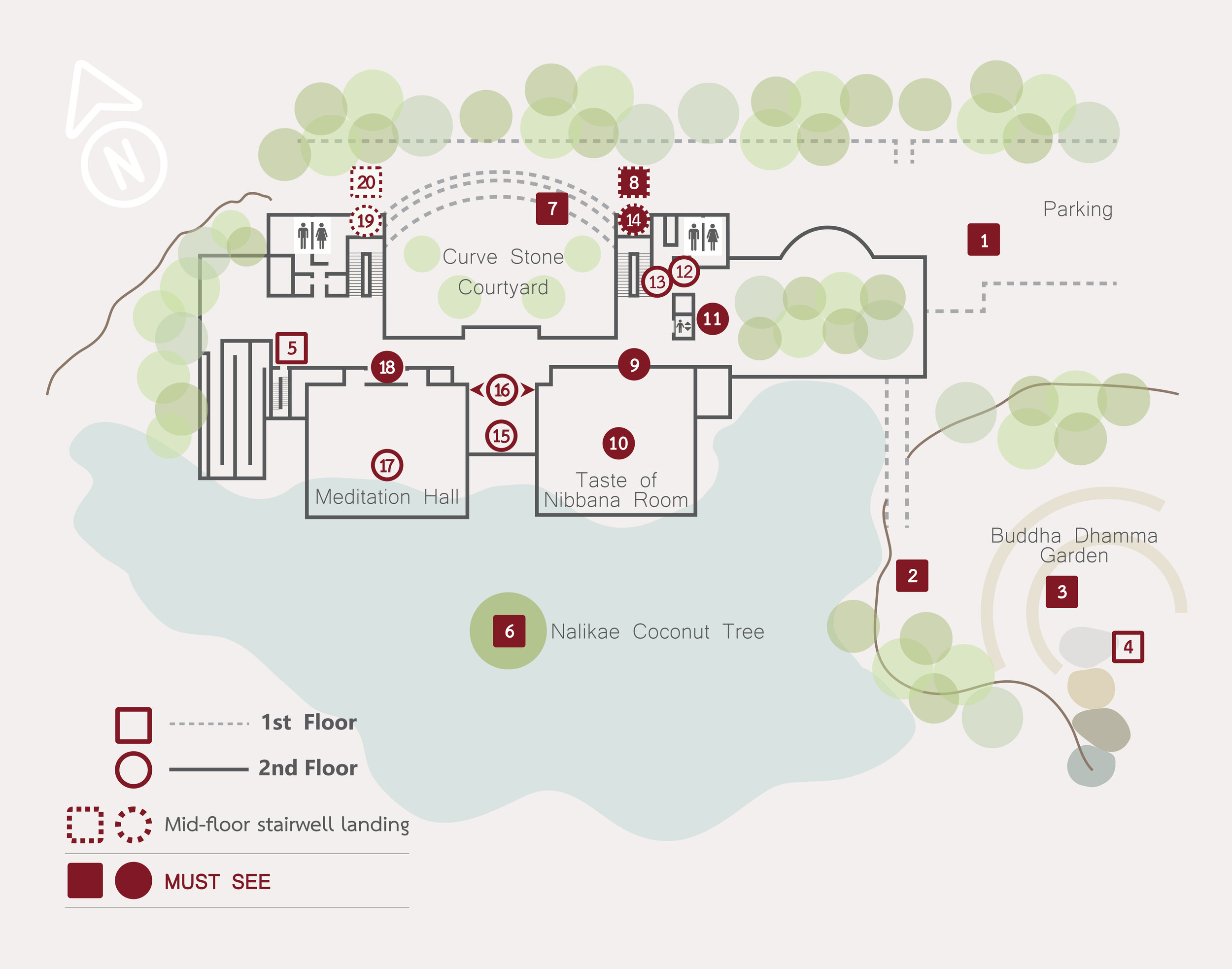Buddhist Mission
Eradicating obstacles to spiritual awakening
The Vajra Seat under the Bodhi tree symbolizes the Buddha’s Enlightenment. It is adorned with the Triratna symbol, or the mark of the Triple Gem—the Buddha, the Dhamma (his teaching), and the Sangha (his disciples). The Wheel of Truth represents the Buddha’s teaching. After his Enlightenment, the Buddha’s first Dhamma sermon set the Wheel of Truth in motion, and with his first disciples the Triple Gem was complete.
In this painting, as the Wheel of Truth rotates along its path, it crushes violence, rites and rituals, deception, superstition, social class status, blind devotion to one’s teacher, obsession with scriptures, religious obsession, obsession with heaven, and clinging to a sense of self. These are obstacles to realizing the essence of the Buddha’s teachings and attaining spiritual awakening and liberation. It is therefore the mission of Suan Mokkh Monastery and all Buddhists to promote the eradication of these obstacles.
The original mural was painted by the students of Buddhadasa Bhikkhu at his request, and is displayed on one of the main walls of the Spiritual Theatre at Suan Mokkh Monastery in Southern Thailand. This replica for BIA undertaken by Thai painters is slightly modified to exhibit greater beauty and detail.
It should be noted that the Triratna was the symbol of Buddhism during the time of King Ashoka the Great over two thousand years ago, before Buddha images began to be created. The Triratna symbol comprises a blossoming lotus in a circle, symbolizing the Buddha’s Birth, and two brightly blazing flames above it, symbolizing the Dhamma and the Sangha. Between the two flames stands the Srivatsa, an auspicious symbol commonly used in those times. Other popular symbols from that era include the Swastika and the Buddha’s footprints. Images of the Buddha were deliberately not included in Buddhist paintings and sculptures during that period.



